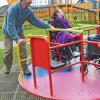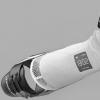Recommendations for choosing the optimal heat supply system are given. Modern heat supply systems (STS) are quite complex technical systems with a significant number of elements that are diverse in their functional purpose
Baibakov S. A., engineer of JSC "VTI"
1. Current situation and problems.
Due to the peculiarities of climatic conditions, uninterrupted provision of the population and industry with heat energy in Russia is an urgent social and economic problem. According to various sources, approximately 2020 million Gcal were produced for heating purposes in 2000. More than 45% of the total consumption of all types of fuel was spent on this, which is approximately 2 times more than the fuel consumption for the needs of the electric power industry and corresponds to the fuel intensity of all other sectors of the economy.
At present, heat supply to consumers in large settlements is mainly produced and will be produced in the future from rather powerful centralized heat supply systems (CHS), which have large CHPPs or district boiler houses as heat sources.
A significant part of the demand for thermal energy in our country, and especially in cities with a high concentration of heat loads, is traditionally provided by large DHWs based on steam turbine CHPPs with cogeneration turbines of various capacities, i.e. there is a widespread use of district heating, the use of which objectively allows you to obtain significant savings in organic fuel. Thus, the combined generation of heat and electricity in Russia from various sources allows saving from 20 to 30% of fuel compared to separate generation.
In modern conditions, the development of district heating and heat supply systems based on it began to experience competition from decentralized schemes and separate generation of heat and electricity, due to the following circumstances.
The efficiency of power plants with condensing turbines has increased significantly and reaches 40 - 43%. At the same time, it was possible to increase the efficiency of heating boiler houses, the value of which exceeds the efficiency of power boilers at CHPPs, and the efficiency of using fuel in small boiler houses can practically reach 100%. All this leads to a decrease in the relative fuel economy during district heating. In addition, the development of district heating requires significant initial costs, and the payback period for the creation of large CHP plants is about ten years. In modern economic conditions this provision, taking into account the factor of mobility, objectively leads to a transition to heat supply from fast payback, automated and highly economical boiler houses of various capacities, including roof and house boiler plants of factory readiness, despite the fact that the unit capital costs for such boiler houses are much higher than that for CHPPs ...
One of the main problems with the traditional DHW scheme is the factor of heat supply reliability. As already noted, the accepted location of the base and peak heat sources, the development of heat supply modes and the values \u200b\u200bof the network water parameters were determined without taking this factor into account. As a result, the following situation has developed.
The concentration of heat power and the radial-dead-end structure of heat networks have very limited possibilities for reserving the heat power of heat sources. Emergency transfers of heat can be carried out mainly at the end sections of heating networks with low throughput. In accordance with this, emergencies at the heat source or at the head sections of the heating mains can lead to a significant and long-term decrease in heat supply to consumers.
To increase the reliability of heat supply at the heat source, it is possible to use backup heat-generating equipment (steam heat exchangers) with steam supply from station steam collectors or from extractions with higher steam parameters and sectioning the collectors of heating plants of CHPPs.
In heating networks, an increase in the reliability of heat supply is ensured by various methods of redundancy and duplication of pipelines, which leads to an increase in the cost of heating networks and the complication of their schemes. With extended main heating networks, increased reliability is provided by sectioning main pipelines, laying several pipelines with a smaller diameter and organizing bridges between them. In addition, it is envisaged to connect consumers to the pipelines of jumpers between adjacent lines, thereby providing the possibility of two-way heat supply.
Another factor that negatively affects the reliability of heating networks is the use of a sufficiently high temperature schedule of 150/70 o C. With this schedule, 1 o C changes in the outside air temperature account for about 3.0 o C changes in the temperature of the supply water in the supply line. Accordingly, with possible relatively rapid intraday changes in weather conditions associated with an increase or decrease in the air temperature during the heating season by 7-10 ° C, a change in the temperature in the supply line by 21-30 ° C is required. At the same time, changes in the air temperature and, accordingly, water temperature in pipelines are usually cyclical.
Under these conditions, operating experience, as a measure to improve reliability, provides for the use of cutting off the temperature graph for a maximum temperature of 120-130 ° C, which leads to a shortage of heat for heating. When installed at heat points of consumers with an independent heating connection scheme of load regulators (water temperature in the heating circuit), the use of cutting off the temperature schedule can lead to a significant increase in water consumption in the heating network and a significant change (complication) of the hydraulic regime of heating networks.
Reducing the attractiveness of heat generation from heat supply systems using district heating leads to disconnection of consumers and their transition to other sources of heat energy. At the same time, production volumes are falling and tariffs for heat energy for other consumers are increasing.
In order to increase the attractiveness of heat supply based on district heating, it is necessary to take organizational and technical measures to improve the reliability and efficiency of heat production and transport, which allow to thoughtfully and comprehensively solve existing problems, taking into account the expected increase in thermal loads of existing systems and deterioration of the main equipment, and in particular those installed at CHP peak boilers.
At the same time, as follows from the published materials on foreign experience in organizing heat supply, at present in European countries (Denmark, Germany), the creation of large district heating systems based on the parallel connection of several sources of various capacities to a common heating network with combined heat generation is widespread. and electrical energy (Mini CHP, CCGT CHP, GTU CHP).
This approach is due to the significant fuel savings obtained when using district heating and the ability to most effectively solve environmental problems when burning fossil fuel. At the same time, the regulation of heat supply in the systems under consideration is carried out in accordance with the schedule of quantitative and qualitative regulation at the maximum design temperature in the supply line at the level of 110 - 130 o C. Normal operation of heat supply systems under these conditions is possible only under the condition of complete automation of heat consumers.
2. Analysis of the available proposals on the structure and schemes of SCT.
Modern SCTs are a complex engineering complex consisting of heat sources (main and peak) and heat consumers, interconnected by heat networks for various purposes and balance belonging, which have characteristic thermal and hydraulic modes with specified heat carrier parameters. The value of the parameters and the nature of their change are determined by the technical capabilities of the main structural elements of heat supply systems (sources, heating networks and consumers), economic feasibility and, to a large extent, the experience gained in the creation and operation of such systems.
Recently, increasing the efficiency of combined heat energy generation and heat supply systems based on it has received close attention. Many authors and organizations have developed various proposals on possible directions for changing the structural schemes of such systems. In this case, we are not talking about the use of new equipment, such as the use of steam-gas cycles for district heating, which in itself makes it possible to increase the efficiency of heat supply, namely, the development of non-traditional schemes of heat supply systems in general, in which the advantages of combined heat production are used to the greatest extent ...
One of such proposals is the well-known from technical literature / 1 / proposal of Doctor of Technical Sciences. Andryushchenko A.I., the essence of which is the transition to a centralized supply of heat from the CHPP only to hot water supply with its release to areas of heat consumption according to a one-pipe scheme. At the same time, the heating load is provided by peak sources located directly in the areas of heat consumption with a different composition of heat generating equipment and corresponding heating networks. The supply of water and heat from the CHPP to the two-pipe district heating networks is carried out in the form of their recharge to compensate for the direct water withdrawal for hot water supply in the district networks, carried out according to an open scheme.
The use of such a SCT scheme makes it possible to increase the efficiency of combined generation by reducing the temperature of heat removal from the cogeneration extraction of turbines with their stable annual load for heat supply.
However, heat supply systems with a similar structure can obviously be used in completely new construction, as well as in the reorganization of a heat supply scheme involving the use of either a suburban IES or a new CHP with heat supply to the existing district heating networks, which use city quarter boiler houses as heat sources. Those. the use of the proposal under consideration requires a special organization of the system, characterized by the concentration of a significant load of hot water supply and the construction of heating networks for its transfer to areas of heat consumption.
The proposed scheme cannot be used for the existing heat supply systems of cities based on large CHPPs on the basis of the practical impossibility of transferring the load of hot water supply to one of the sources. In addition, when using open circuits for hot water supply, one should take into account the need to create an appropriate water treatment of high productivity and the availability of source water of a certain quality.
Several options for changing the schemes for connecting peak sources in heat supply systems and the operating conditions of heating networks are given by the authors from the Ulyanovsk GTU in the monograph / 2 /.
There are basically two proposals to consider.
In the first of them, it is proposed to connect peak boiler houses at CHPPs in parallel with network heaters and transfer the operation of heating networks to a lower temperature schedule using central quantitative or qualitative-quantitative regulation.
In this regard, it should be said that with modern automation schemes for heat points, a central change in the water consumption at the heat source is impossible, since the water consumption is determined by the regulators at the heat consumer. In addition, it raises doubts about the possibility of observing the restrictions on the permissible water consumption through the network heaters of the turbines with significant changes in the costs in the heating networks, which may require the shutdown of the turbines for heat supply with their operation in a purely condensing mode.
In addition, for existing heat supply systems, a direct transition to a lower temperature schedule is also not possible, since at the same heat load, the significantly increased consumption of network water cannot be passed through heating networks with the same pipe diameters.
The second proposal considers the possibility of transition to full decentralization of peak power installations of heat supply systems with its production directly from consumers. This proposal is also hardly economically justified in terms of the total costs of the heat supply system, although it allows, according to the authors, to obtain significant fuel savings.
So, as peak sources, it is proposed to use either electric heaters or house gas boilers. All this together will obviously be much more expensive than the reconstruction of the peak water heating boiler house at the CHPP, since it will require re-laying of either the electric networks or gas pipes. In addition, the use of electricity for heating purposes, as shown by previous experience, provides economic benefits only if there is a surplus of cheap electricity, for example, at hydroelectric power plants.
Operating modes of heating networks with the proposed schemes are practically not considered by the authors.
One of the most recent proposals was made by a team of authors from Belarus (Shkoda A.N. and others), which consists in the transition from heat supply from CHP to three-pipe schemes of heating networks with separate heat supply for heating and hot water supply / 3 /. At the same time, at the CHPP, the hot water supply load is provided mainly through the use of the cogeneration bundle of the condenser and the selection of the lower stage, and the heat supply for heating is made from the upper cogeneration withdrawals.
The proposed version of the heat supply system scheme has a number of advantages. The efficiency of the turbine is increased due to the elimination of a purely ventilation passage and the generation of electricity based on heat consumption while reducing the parameters of heat removal from the cycle. At the same time, the operating modes of heating networks are improved by stabilizing the hydraulic regime and ensuring the possibility of reducing the water temperature in the supply line at positive air temperatures in accordance with the heating schedule, due to the absence of the need for a break in the temperature schedule. The use of storage tanks for hot water supply, installed in areas of heat consumption, also allows you to have a stable hydraulic and thermal regime in the pipelines of the hot water supply system from the CHPP.
For the above SCR scheme, it is necessary to install equipment at CHP plants for the preparation of water for hot water supply, and in addition, the use of such a scheme in existing systems is practically impossible to implement, since almost all heating networks from CHP plants require additional laying of pipelines for hot water supply networks. The proposed scheme can be considered as an option when creating new centralized heat supply systems.
In the above works, the direct heat sources (heating equipment of turbines and peak boiler houses) and the increase in efficiency in heat generation are considered in detail, but not enough attention is paid to the conditions and operating modes of the connected heating networks and heat consumers, as well as to the issues of creating integral systems based on the proposed options. In particular, this concerns the possibilities of using the above proposals for use in already established SCR with a traditional scheme.
However, the presence of the above problems with centralized heat supply and a possible increase in heat loads in cities will require raising the question of the expediency of their reconstruction and modernization. At the same time, the existing problems must be solved in a complex, taking into account the existing conditions and possible modes of operation of heating networks and consumers.
3. Proposals for changing the schemes of existing SCT.
As the main directions for achieving the above goals, one should first of all consider proposals that allow for the possible decentralization of heat sources and a decrease in the temperature schedule of heat networks.
For heat supply systems with a traditional structure, reducing the temperature schedule of heating networks is an expensive and difficult task. This is mainly determined by the possibilities of regulating the supply of heat for heating in the heating points of consumers and the diameters of pipelines adopted in the design of heating networks.
Below is a possible option for changing the structure of the currently operating SCT, the implementation of which will make it possible to ensure the fulfillment of these conditions at the lowest cost.
It is proposed to reconstruct the heat supply system by transferring peak heat sources from the CHPP to the areas of heat consumption. At the same time, peak boilers requiring reconstruction at the CHPP are dismantled, and new peak heat sources are installed on the heating networks of all large outlets of the CHPP and are connected to the existing highways at intermediate points. A schematic diagram of the heat supply system with such a transfer of peak sources is shown in Fig. 1, which also shows the original SCR scheme (Fig. 1 a) with a traditional structure.

Hot water boilers, as well as various other types of heat generating equipment, including CCGT or GTU CHPP, can be used as peak sources. The choice of the type of peak source is generally determined based on the results of technical and economic calculations.
The transfer of peak sources to areas of heat consumption divides the heating networks with connected consumers into two zones: the zone between the CHP and the point of connection of the peak source (CHP zone); and the area after the peak source (the area of \u200b\u200bthe peak boiler room). At the same time, in both zones, different temperature (temperature curves) and corresponding hydraulic conditions can be maintained. As shown in Fig. 1, the switching on of peak sources for network water can be carried out both in series with the heating equipment of the CHPP and in parallel with the equipment of the CHPP. Each of the connection schemes has its own advantages or disadvantages.
When connected in series, a large flow of water with a relatively high temperature in front of the source will pass through the peak source, which is important when using hot water boilers. This scheme provides for the supply of heat only to the zone of the peak source in the absence of the possibility of delivering heat power to the zone of the CHP.
When connected in parallel, a reduced flow rate passes through the peak source with the return line temperature at the inlet, but at the same time it is possible to supply water and heat to the heating networks of the CHP zone, thereby providing the possibility of redundancy of the CHP heat capacity. A mixing pump is installed on the peak source.
In real conditions, both parallel and series connection of peak sources can be used simultaneously. The choice of specific schemes is determined by the hydraulic characteristics of the existing heating networks and the necessary redundancy conditions.
The proposed change in the structure of the heat supply system makes it possible to reduce the heat power supplied directly from the CHP to the power level of the heating equipment of the turbines. Under this condition, the previous water flow can be passed through the existing pipelines without changing the diameter, which makes it possible to switch to a lower temperature schedule in the CHP zone.
The length of the heating networks after the peak source is comparatively less than the total length of the network of the original system, which allows large pressure (head) losses to be allowed, provided that the previous available head is maintained at the most distant consumers. In accordance with this, in the networks after the peak source, it is also possible to switch to a reduced schedule with increased consumption of network water.
The proposed block diagram of the SCT leads to the decentralization of heat sources with the possibility of their mutual redundancy and at the same time allows switching to a lower temperature schedule in heating networks, which should ensure an increase in the reliability of heat supply. The transition to the proposed block diagram of the DHS will only require bringing the automation of consumers' heat points to the required level.
In addition to these advantages, the proposed scheme allows to increase the connected load and capacity of the heat supply system in certain areas of heating networks by increasing the capacity of peak sources, without changing the diameters of the pipelines of the rest of the network and the characteristics of other heat sources included in the DHS.
It should be noted that the hydraulic and thermal regimes of heating networks and heat sources, among other conditions, also depend on the place where the peak source is connected to the heating network, i.e. from the removal of the connected peak source from the CHP.
As an example of determining the indicators of modes and assessing the main conditions for the reconstruction of the central heating system, the required parameters and operating modes were considered when changing the scheme of the centralized heat supply system with a conditional design heat load of consumers of 1 Gcal / h.
Consumers are connected to the initial heating network only with a heating load at a design temperature in the premises of +18 o C. Under these conditions and the temperature schedule of the traditional scheme of 150/70 o C, the water consumption in the network is constant and equal to 12.5 t / h.
It was assumed that the heating coefficient for the original traditional scheme is 0.5, i.e. half of the design load of the system is covered from the heat extraction of the turbines. The other half is provided by the peak boiler room. The graph of the coverage of the heat load of the heat supply system depending on the outside air temperature (relative heating load), adopted on the basis of the condition of maximum heat load of the cogeneration turbines of the CHPP, is shown in Fig. 2

Figure: 2 Schedule of coverage of the heat load of the heat supply system.
For a preliminary analysis, we will assume that the connection of the heat load is distributed evenly over the heating network, which is one dead-end main line with a variable diameter along the length of the network. The total relative length of the network is 1.
The diagrams of the initial heat supply system and the system after the transfer of the peak source (peak boiler house) to the heat consumption area are shown in Fig. 3. In the same fig. the symbols used in the following are given for the main parameters of the SCT modes
and. Initial (traditional) SCT scheme

b. Converted SCT circuit

Figure: 3 SCT conversion scheme and symbols.
Legend:
1 - Heating equipment of CHP
2 - Peak source (peak boiler house)
To assess the change in the hydraulic regimes of the heat supply system, it was assumed that in the heat network with the traditional scheme, there is a linear change in pressure along the length of the pipelines. In this case, the relative available head at the CHPP under the traditional scheme is equal to 1, and the network stability (the ratio of the available head at the subscriber input to the available head at the CHPP) is 0.2, i.e. the available head at the last consumer is equal to 20% of the developed head at the CHP.
Based on the results of the calculations, the technical feasibility of transferring the peak source to the area of \u200b\u200bheat consumption and the recommended operating modes of the heat supply system will mainly be shown. It should also be borne in mind that the choice of the main parameters and solutions (power ratio, location of the peak source, adopted temperature graphs, etc.) is obviously determined not only by purely technical, but also by technical and economic conditions. In the proposed material, technical and economic conditions are not considered.
For the new heat supply system, the same schedule for covering the total heat load of the system was adopted as for the original network, which is shown in Fig. 2, that is, the peak source provides, under design conditions, half the load and the heating coefficient for the DHS as a whole remains equal to 0.5.
We will assume that for consumers connected to the network after the transferred peak source (PC zone), a heating temperature schedule of 130/70 o C is adopted. For consumers of the CHP zone, the calculated temperature schedule is taken lower based on the possibility of heat extraction from turbines and equal to 120/70 o FROM.
Subject to automation of consumers' heat points, the temperature in the return line of the network during reconstruction will not change and will remain equal to this temperature for the original heating network.
The possible point of connection of the peak source to the heating networks under the accepted conditions is determined by the hydraulic regime of the original system and the conditions of the obtained hydraulic regimes during the transfer of the peak source, for which the requirement to ensure the first available heads at the connected consumers must be fulfilled.
As shown by the calculations of the thermohydraulic modes of the converted heat supply system, the point of connection of the peak source closest to the CHP, provided that the given available pressures are provided for the connected consumers, is 60% of the total length of the initial heating network, i.e., it is 0.6 relative units of the total length of the network from the CHP. At the same time, the calculated heat load of consumers in the CHP zone will be 0.6 Gcal / h, and the peak boiler zone 0.4 Gcal / h.
For SCR, after reconstruction, the original schedule of coverage of the total thermal loads of the system is preserved. However, the graphs of the coverage of the loads of the CHPP zones and the peak boiler house for the conditions of Fig. 2 are more complex.
The schedule for covering the heat loads of consumers in the CHP zone, depending on the relative heating load, is shown in Fig. 4, the schedule for covering the heat loads of consumers in the peak boiler room zone is shown in Fig. five

In fig. 4 shows the graphs of changes in the load of consumers in the CHP zone and heat supply from the CHP. There is also a graph of heat supply from the CHP plant to the peak source area (to the PC area). The latter, at relative loads greater than 0.83 (at low outside temperatures), has negative values, which indicates the need to supply heat to the CHP zone from a peak source.
Figure 5 shows the graphs of the load of consumers in the PC zone and heat supply from the peak source. In the same fig. Also shown is a graph of heat supply to the PK zone from the CHPP, which at relative loads greater than 0.83 has negative values, indicating, as already noted, the supply of heat from the peak source to the CHPP zone.

Temperature graphs of the SCR for the CHP zone and the peak boiler house are shown in Fig. 6, which also shows the temperature graph of the original SCR for comparison.

As follows from Fig. 6, the temperature graph from the CHP plant of the converted heat supply system has a complex dependence on the outside air temperature. The maximum temperature under design conditions corresponds, as indicated earlier, 120 ° C, and the minimum temperature of the supply water from the CHP at the start (end) point of the heating period is taken equal to 70 ° C. The graph under consideration has a break point at a relative load equal to 0.5, corresponding to the switching point of the peak boiler room. The temperature at this point determines the highest water consumption in the pipelines of the CHP zone, transmitted to the PC zone, which determines the most intense hydraulic regime of the CHP zone and the heat supply system as a whole. The temperature at the break point was determined based on the conditions for ensuring the necessary hydraulic conditions for the connected consumers at the accepted connection point of the transferred peak source.
It should be noted that the temperature level in the supply line from the heating part of the CHPP determines the efficiency of combined heat and power generation and the lower it is, the higher the specific combined generation.
The water flow graphs corresponding to the above data on temperatures in different parts of the SCR scheme at the accepted point of transfer of the peak source depending on the relative heating load (outside air temperature) in different sections of the heat supply system are shown in Fig. 7. For comparison, the figure shows the required graph of the flow rate of network water from the CHP for the original heat supply system at a temperature graph of 150/70 o C.

As follows from Fig. 7, the water consumption from the CHPP in the reconstructed heat supply system is significantly lower than the initial value of 12.5 t / h and increases with a decrease in the outside air temperature from 6.5 to 10.0 t / h. With a decrease in air temperature, the water flow through the peak source first decreases from 4.1 to 3.6 t / h and then increases to a maximum value under design conditions equal to 8.7 t / h.
As in the case of heat supply, in the reconstructed CHP there are water flows between the CHP zone and the PK zone. Water flow rates by zones are shown in Fig. 8 and 9.

Figure 8 shows a graph of the total water consumption for consumers in the CHP zone, a graph of water consumption from the CHP and a graph of water supply to the CHP zone from the peak source. The latter has negative values \u200b\u200bfor relative loads less than 0.83 and shows that at these relative loads, water is supplied from the pipelines of the CHPP zone (from the CHPP) to the peak source.

In fig. 9 shows the graphs of water consumption in the zone of the peak source, as well as graphs of water consumption for consumers of the PK zone, water consumption through the peak source and water consumption from the CHPP to the PK zone. In this case, the maximum value of the flow rate of water supplied from the CHPP to the peak source is noted at a relative load equal to 0.5 and the corresponding switch-on point of the peak boiler house. The value of this consumption is 3.3 t / h.
Based on the above data on the calculated hydraulic regime of the initial network and the conditions for connecting the heat load, calculations of the hydraulic regimes were carried out and piezometric graphs of the reconstructed network were constructed for the characteristic relative loads (outside air temperatures), shown in Fig. ten.

In fig. Piezometric graphs are shown at the design temperature of the outside air, at the most stressed hydraulic mode, corresponding to the relative load at the point where the peak source starts to work, and, for comparison, the piezometric graph of the heating network of the initial heat supply system. As follows from Fig. 10 requirements for hydraulic modes for the converted SCR (requirements for the available heads of connected consumers) are met in all modes.
The obtained calculation results show the possibility of technical implementation of the proposed change in the SCT scheme, while the results are given for one of the possible options. For the accepted conditions for changing the scheme, the costs of pumping the coolant increase and the indicators of specific combined heat production deteriorate, since heat is supplied from the heating equipment of the CHP plant at higher temperatures in the supply line of the heating network of the CHP zone than for the original CHP scheme. However, for the modified scheme of the heat supply system, the level of maximum temperatures in the supply line will decrease, which, together with the decentralization of heat sources, will increase the reliability of heat supply with a slight decrease in its efficiency.
The technical and economic indicators of the above-considered variant of the reconstruction of the central heating system at the given design temperature curves are determined by the accepted point of connection to the heating network of the peak heat source. So the removal of the connection point of the peak source from the CHPP leads to an improvement in the indicators of hydraulic modes, namely, to an increase in the available heads in the heating network. This circumstance makes it possible to either increase the water consumption from the CHP when the temperature in the supply line of the CHP zone drops and thereby improve the indicators of combined heat and electric power generation, or to reduce the available heads at the CHP and the peak source, reducing the additional power consumption for pumping the heat carrier. In this case, one should also take into account the change in heat losses in heat networks associated with a change in the temperature regime of heat networks.
The choice of the main parameters of the variable SCT scheme is the result of technical and economic optimization calculations and is not considered in the proposed material.
4. Conclusions.
1. The existing well-developed district heating systems based on large urban CHPPs with a traditional layout require reconstruction, both in terms of equipment used and structural diagrams. Such reconstruction should lead, first of all, to an increase in the reliability of heat supply and to provide opportunities for increasing the connected load.
2. The proposals in the modern technical literature for changing the schemes of heat supply systems cause a number of comments. Most of these proposals make it possible to increase the efficiency of using combined generation, but are practically of little use for existing DHS because of the significant costs of their implementation, mainly associated with heating networks. Other proposals require a comprehensive analysis and additional calculations for the modes of heat supply and the parameters of the coolant at various points of the schemes with the determination of the total costs of the creation and operation of such systems.
3. The scheme of reconstruction of traditional heat supply systems proposed in the article, associated with the transfer of peak sources to the area of \u200b\u200bheat consumption and their connection to the existing mains of heating networks, is technically feasible and allows to increase the reliability of heat supply by improving the reservation conditions and switching to lower temperature schedules. At the same time, re-laying of heating networks is not required, but it is only necessary to bring the automation of the schemes for connecting the heat load of consumers to the modern level.
List of references
1. Andryushchenko AI Combined heat supply systems. // "Heat Power Engineering". 1997. No. 5. S. 2-6.
2. Sharapov V. I., Orlov M. E. Technologies for ensuring the peak load of heat supply systems. M .: Publishing house "News of heat supply", 2006.-208s .; silt
3. Shkoda AN, Shkoda VN, Kukharchik VM Improvement of combined heat supply technologies. "Power stations". 2008. No. 10. 16-17.
All modern heating systems for private houses and other residential buildings can be conditionally divided into 2 groups. The first includes traditional heating methods, where a single heat source is used - a boiler operating on one or more energy sources. In this case, thermal energy is distributed throughout the premises by means of a heat carrier - water or air. Here, innovative solutions are aimed at improving heating equipment by increasing its heat transfer, as well as introducing modern automation tools.
The second group should include all systems using new heating technologies with energy-saving equipment. They do not provide for the combustion of hydrocarbons; of the energy carriers, only electricity participates in heating the house. These are various solar systems, solar collectors and the latest types of electric heating. Despite all the attractiveness of these systems, most homeowners prefer traditional heating systems for private houses, and why is described in our article.
Evolution of traditional systems and boilers
In Soviet times, when no one was concerned about the cost of energy resources, heating equipment and systems were quite primitive, although they were made very reliably and served for many years. Now the priorities have changed, modern energy-saving technologies have become relevant, which make it possible to save the constantly rising energy resources.
Thanks to this, traditional systems have become more perfect due to the implementation of such solutions:
- increasing the efficiency of all boiler plants, excluding electrical ones, since their efficiency is already very high (98-99%);
- the use of new materials and technologies for the manufacture of heating radiators;
- introduction of modern automation tools that control the operation of systems depending on weather conditions and time of day, including remotely;
- application of low-temperature heating networks - water-heated floors with automatic heating control;
- implementation of heat extraction from the exhaust air discharged during air heating of buildings (recuperation).
Condensing boilers with state-of-the-art heat exchangers are a prime example of energy-saving gas equipment. The fact is that when methane burns, water is formed, which immediately evaporates in the burner flame and thus takes away part of the heat released. The heat exchanger of a condensing boiler is designed to force the vapors to condense and give this energy back. Due to this innovative solution, the efficiency of the heat generator reaches 96%.

Burners have also undergone changes, now they are able to independently dose the amount of fuel and air, as well as automatically change the intensity of combustion. This also applies to solid fuel boilers that burn wood pellets - pellets. Due to the purity of this type solid fuel, full automation of the process and a developed heat exchange surface, a modern pellet boiler can operate with an efficiency of up to 85%.

An increase in the efficiency of conventional wood-burning boilers for heating private houses can be achieved only through the extraction of heat from flue gases, the average rate of these units is 70-75%.
Modern heating devices are made of the best heat-conducting materials - aluminum alloy and steel, although there are still many fans of retro-style cast-iron batteries. A real novelty in the field of heating - water baseboard convectors, made of copper plates and very efficiently transfer heat to the premises of a private house.

About underfloor heating and air heating
Widely used underfloor heating systems cannot be called so new. But they proved to be very economical in practice, and here's why:
- the coolant in the underfloor heating circuits is heated to no more than 45 ° C;
- the room is heated by the entire floor surface;
- the system lends itself well to control by modern automation tools;
- the heated screed retains heat for a long time after the heating is turned off.

Note. In addition to the fact that the warm floor uses heat efficiently, it ensures its supply to the lower zone of the room, which is very comfortable for people who are there.
Modern solutions in terms of air heating of buildings consist in not losing the heat spent on heating the ventilation air. The extraction of heat from the exhaust air is carried out by special heat exchangers - recuperators. These are truly innovations in heating, since they are able to recover up to 80% of the consumed energy and transfer it to the supply air, significantly saving energy.

The latest heating systems
An example of a fairly accessible and at the same time effective system, suitable for both country house, and for an apartment - electric floor heating. Having incurred relatively small expenses for the device of such heating, you can provide your home with heat and not buy any boilers. There is only one drawback - the cost of electricity. But given that modern floor heating is quite economical, and in the presence of a multi-tariff meter, this option may be acceptable.

For reference. When installing an electric underfloor heating, 2 types of heaters are used: a thin polymer film with deposited carbon elements or a heating cable.
In southern regions with high solar activity, another modern heating system is performing well. These are solar water collectors installed on the roof of buildings or other open areas. In them, with minimal losses, water is heated directly from the sun, after which it is supplied to the house. One problem is that the collectors are absolutely useless at night, as well as in the northern regions.

Various solar systems that take heat from the ground, water and air and transfer it to a private house are installations in which the most modern heating technologies are implemented. Consuming only 3-5 kW of electricity, these units are able to "pump" from the outside 5-10 times more heat, hence the name - heat pumps. Then, with the help of this thermal energy, you can heat the coolant or air, at your discretion.

An example of an air heat pump is a conventional air conditioner, the principle of operation is the same for them. Only the solar system heats a country house equally well in winter and cools in summer.
conclusions
It is a well-known fact: the more efficient an innovation in a heating system, the more expensive it is, although it requires lower operating costs. And vice versa, high-tech electric heating systems, cheap to install, make us pay for the electricity consumed later. Heat pumps are so expensive that they are inaccessible to most of the citizens of the post-Soviet space.
The second reason why homeowners gravitate towards traditional systems is the direct dependence of modern heating equipment on the availability of electricity. For residents of remote areas, this fact plays an important role, which is why they prefer to build stoves from bricks and heat the house with firewood.
There are two types of heat supply - centralized and decentralized. With decentralized heat supply, the heat source and consumer are close to each other. There is no heating network. Decentralized heat supply is divided into local (heat supply from the local boiler house) and individual (stove, heat supply from boilers in apartments).
Depending on the degree of centralization, the district heating system (DHS) can be divided into four groups:
1.group heat supply (TS) of a group of buildings;
2. district - TS of the urban district;
3. urban - city vehicle;
4. intercity - TS of several cities.
The DH process consists of three operations - preparation of the heat carrier (HP), transport of HP and use of HP.
HP preparation is carried out at heat treatment plants of CHPPs and boiler houses. HP transportation is carried out through heating networks. The use of heat pumps is carried out at the heat-consuming installations of consumers.
The complex of installations designed for the preparation, transport and use of the heat carrier is called the district heating system.
There are two main categories of heat consumption:
To create comfortable working and living conditions (communal and household load). This includes the consumption of water for heating, ventilation, hot water supply (DHW), air conditioning;
For the release of products of a given quality (technological load).
According to the temperature level, heat is divided into:
Low-potential, with temperatures up to 150 0 С;
Medium potential, with a temperature from 150 0 С to 400 0 С;
High potential, with a temperature above 400 0 С.
refers to low-potential processes. The maximum temperature in heating networks does not exceed 150 0 С (in the direct pipeline), the minimum temperature is 70 0 С (in the return). To cover the technological load, steam with a pressure of up to 1.4 MPa is usually used.Heat treatment plants of CHP and boiler houses are used as heat sources. The CHPP provides combined heat and power generation based on a heating cycle. Separate generation of heat and electricity is carried out in boiler houses and condensing power plants. With combined generation, the total fuel consumption is lower than with separate generation.
The entire set of equipment for a heat supply source, heating networks and subscriber installations is called a centralized heat supply system.
Heat supply systems are classified according to the type of heat source (or the method of heat preparation), the type of heat carrier, the method of supplying water to hot water supply, the number of pipelines of the heating network, the method of supplying consumers, the degree of centralization.
By type of heat source there are three types of heat supply:
District heating from a CHP, called heat-fication;
Centralized heat supply from district or industrial boilers;
Decentralized heat supply from local boilers or individual heating units.
Compared with with centralized heat supply from boiler houses, district heating has a number of advantages, which are expressed in fuel savings due to the combined generation of heat and electricity at CHPPs; in the possibility of widespread use of local low-grade fuel, the combustion of which in boiler houses is difficult; in improving the sanitary conditions and cleanliness of the air basin in cities and industrial areas due to the concentration of fuel combustion in a small number of points, located, as a rule, at a considerable distance from residential areas, and more rational use modern methods of cleaning flue gases from harmful impurities.
By the type of coolant heat supply systems are divided into water and steam. Steam systems distributed mainly in industrial enterprises, and water systems are used for heat supply of housing and communal services and some industrial consumers. This is explained by a number of advantages of water as a heat carrier compared to steam: the possibility of central high-quality regulation of the heat load, lower energy losses during transportation and a longer range of heat supply, the absence of losses of heating steam condensate, greater combined energy production at CHP plant with increased storage capacity.
By the method of supplying water to hot water supply water systems are divided into closed and open.
IN closed systems mains water is used only as a heat carrier and is not taken from the system. Local hot water supply installations receive water from a drinking water supply system, heated in special water-to-water heaters due to the heat of the network water.
In open systems mains water directly enters the local hot water supply installations. At the same time, additional heat exchangers are not required, which greatly simplifies and reduces the cost of the subscriber input device. However, water losses in an open system increase sharply (from 0.5-1% to 20-40% of the total water consumption in the system) and the composition of water supplied to consumers deteriorates due to the presence of corrosion products and lack of biological treatment.
The advantages of closed heat supply systems are that their use ensures a stable quality of hot water supplied to hot water supply installations, the same as the quality of tap water; hydraulic isolation of the water entering the hot water supply units from the water circulating in the heating network; simplicity of monitoring the tightness of the system by the make-up value
The main disadvantages of closed systems are the complication and rise in the cost of equipment and the operation of subscriber inputs due to the installation of water-water heaters and corrosion of local hot water supply installations due to the use of non-deaerated water.
The main advantages of open systems heat supply consists in the possibility of maximum use of low-grade heat sources for heating a large amount of make-up water. Since in closed systems the make-up does not exceed 1% of the flow rate of the network water, the possibility of utilizing the heat of waste and blowdown water at CHPPs with a closed system is much lower than in open systems. In addition, deaerated water enters the local hot water supply systems in open systems, so they are less susceptible to corrosion and are more durable.
The disadvantages of open systems are: the need for a powerful water treatment device at the CHPP to feed the heating network, which increases the cost of station water treatment, especially with increased hardness of the initial raw water; complication and increase in the volume of sanitary control over the system; complication of system tightness control (since the amount of make-up does not characterize the system density); instability of the hydraulic regime of the network.
By the number of pipelines distinguish one-, two- and multi-pipe systems. Moreover, for an open system, the minimum number of pipelines is one, and for a closed system, two. The simplest and most promising for transporting heat over long distances is a one-pipe open heat supply system. However, the scope of application of such systems is limited due to the fact that its implementation is possible only under the condition of equality of the water flow required to satisfy the heating and ventilation load, the consumption of water for hot water supply to consumers of the given nogo area. For most regions of our country, the consumption of water for hot water supply is much less (3-4 times) the consumption of network water for heating and ventilation, therefore, in the heat supply of cities, two-pipe systems are predominantly used. In a two-pipe system, the heating network consists of two lines: supply and return.
By way of providing heat consumers are distinguished one-
step and multistage heat supply systems. In one-
in step systems, heat consumers are connected directly to heating networks. Nodes of connection of consumers to the network
called subscriber inputs or local heating points (MTP). Hot water supply heaters, elevators, pumps, instrumentation and control valves are installed at the subscriber input of each building to change the parameters of the heat carrier in local consumer systems.
In multistage systems between the heat source and consumers, central heating points or sub-stations (TSC) are located, in which the parameters of the coolant change depending on the consumption of heat by local consumers. The central heating station houses a central heating unit for hot water supply, a central mixing unit for network water, booster pumps for cold tap water, automatic control and measuring instruments. The use of multi-stage systems with a central heating station makes it possible to reduce the initial costs for the construction of a heating installation for hot water supply, pumping units and auto-regulating devices due to an increase in their unit capacity and a reduction in the number of equipment elements.
The optimal estimated performance of the central heating station depends on the layout of the area, the mode of operation of consumers and is determined on the basis of technical and economic calculations.
By the degree of centralizationheat supply can be divided into group - heat supply for a group of buildings, district - heat supply for several groups of buildings, urban - heat supply for several districts, intercity - heat supply for several cities.
The device and structures of heating networks.
The main elements of heating networks are a pipeline consisting of steel pipes connected by welding; an insulating structure that supports the weight of the pipeline and the forces that arise during its operation.
Pipes are critical elements of pipelines and must meet the following requirements:
Sufficient strength and tightness at maximum values \u200b\u200bof pressure and temperature of the coolant,
Low coefficient of thermal deformation,
Providing low thermal stresses with alternating thermal conditions of the heating network,
Small roughness of the inner surface,
Anti-corrosive resistance,
High thermal resistance of the pipe walls,
Contributing to the preservation of heat and temperature of the coolant,
Consistency of material properties under prolonged exposure to high temperatures and pressures, ease of installation,
Reliability of pipe connections, etc.
The existing steel pipes do not fully satisfy all the requirements, but their mechanical properties, simplicity, reliability and tightness of joints (by welding) ensured their preferential use in heating networks.
Pipes for heating networks are mainly made of steel grades St2sp, St3sp, 10, 20, 10G2S1, 15GS, 16GS.
Seamless hot-rolled and electric-welded ones are used in heating networks. Seamless hot-rolled pipes are produced with outer diameters of 32 - 426mm. Seamless hot-rolled electric-welded pipes are used for all methods of laying networks. Electrowelded pipes are used for all types of network laying. Electrowelded with a spiral seam are recommended for use in duct and above-ground laying of networks.
Support. When constructing heating networks, two types of supports are used: free and fixed. Free supports take the weight of the heat conductor and ensure its free movement during temperature deformations. Fixed supports are designed to secure the pipeline at the characteristic points of the network and perceive the forces arising at the fixation point both in the radial and axial directions under the influence of weight, temperature deformations and internal pressure.
Compensators . Compensation of thermal deformations in pipelines is performed by special devices called compensators. According to the principle of action, they are divided into two groups:
Compensators are radial or flexible, perceiving the lengthening of the heat conductor by bending or twisting of curved pipe sections or bending of special elastic inserts of various shapes;
Axial expansion joints, in which the lengthening is perceived by telescopic movement of pipes or compression of spring inserts.
The most widely used in practice are flexible expansion joints of various configurations made of the pipeline itself (P - and - S-shaped, lyre-shaped with and without folds, etc.). Simplicity of the device, reliability, lack of need for maintenance, unloading of fixed supports - these are the advantages of these compensators.
The disadvantages of flexible expansion joints include: increased hydraulic resistance, increased pipe flow, lateral movement of deformable sections, which requires an increase in the width of non-passable channels and makes it difficult to use backfill insulation, channelless pipelines, as well as large dimensions that make it difficult to use them in cities when the route is saturated with urban underground communications ...
Axial expansion joints are of sliding type (stuffing box) and elastic (lens expansion joints).
Stuffing box expansion joint is made from standard pipes and consists of a body, a bowl and a seal. When the pipeline is lengthened, the glass is pushed into the body cavity. The tightness of the sliding joint of the body and the glass is created by the stuffing box packing, which is made of a printed asbestos cord impregnated with oil. Over time, the packing wears out and loses its elasticity, so periodic tightening of the gland and replacement of packing is required. Lens compensators made of sheet steel are free from this drawback. Lens welded type expansion joints are mainly used in low pressure pipelines (up to 0.4-0.5 MPa).
The constructive implementation of the pipeline elements also depends on the method of its laying, which is selected on the basis of a technical and economic comparison of possible options.
Heating system
Questions
1. The concept of a heat supply system and its classification.
2. Centralized heating systems and their elements.
3. Schemes of heating networks.
4. Laying of heating networks.
1. Complex engineering equipment for rural settlements. / AB. Keatov, P.B. Maisels, I. Yu. Rubchak. - M .: Stroyizdat, 1982 .-- 264 p.
2. Kocheva M.A. Engineering equipment and improvement of built-up areas: Textbook. - N. Novgorod: Nizhny Novgorod. state architect-build un.-t., 2003. – 121 p.
3. Engineering networks and equipment of territories, buildings and construction sites / I.А. Nikolaevskaya, L.P. Gorlopanova, N.Yu. Morozov; Under. ed by I.A. Nikolaevskaya. - M: Ed. Center "Academy", 2004. - 224 p.
The concept of a heat supply system and its classification
Heating system- a set of technical devices, units and subsystems that provide: 1) preparation of the heat carrier, 2) its transportation, 3) distribution in accordance with the demand for heat among individual consumers.
Modern heat supply systems must meet the following basic requirements:
1. Reliable strength and tightness of pipelines and installed
on them fittings at the temperatures of the coolant expected under operating conditions.
2. High and stable in operational conditions heat and electrical resistance, resistance, as well as low air permeability and water absorption of the insulating structure.
3. The ability to manufacture in the factory all major "
elements of the heat pipe, enlarged to the limits determined by the type and
bone lifting vehicles. Assembling heat pipes on the track!
ready-made elements.
4. Possibility of mechanization of all labor-intensive construction and installation processes.
5. Maintainability, ie the ability to quickly identify the causes
occurrence of failures or damage and elimination of malfunctions and their consequences by carrying out repairs at a given time.
Depending on the capacity of the systems and the number of consumers receiving heat energy from them, heat supply systems are divided into centralized and decentralized.
Thermal energy in the form of hot water or steam is transported from a heat source (combined heat and power plant (CHP) or a large boiler house) to consumers through special pipelines - heating networks.
Heat supply systems consist of three main elements: generator,in which heat energy is generated; heat pipelines,through which heat is supplied to heating devices; heating devices,serving to transfer heat from the coolant to the air of the heated room or air in ventilation systems, or tap water in hot water supply systems.
In small settlements, mainly two heat supply systems are used: local and centralized. Central systems are not typical for buildings no higher than three floors.
Local systems- in which all three main elements are located in the same room or in adjacent ones. The range of such systems is limited to a few small rooms.
Centralized systemsare characterized by the fact that the heat generator is removed from the heated buildings or consumers of hot water supply to a special building. Such a source of heat can be a boiler house for a group of buildings, a village boiler house or a combined heat and power plant (CHP).
Local heating systems include solid fuel stoves, gas stoves and hot-air heating systems, floor or apartment water systems, and electric.
Solid fuel stove heating.Heating stoves are installed in settlements with low heat density. For sanitary and hygienic and fire safety reasons, they are allowed to be installed only in one- and two-story buildings.
The designs of indoor stoves are very diverse. They can be of various shapes in plan, with different finishes of the outer surface and with different schemes of smoke flows located inside the furnace, through which gases move. Depending on the direction of movement of gases inside the furnaces, a distinction is made between multi-turn channel and channelless furnaces. Firstly, the movement of gases inside the furnace occurs through channels connected in series or in parallel, and secondly, the movement of gases occurs inside the cavity of the furnace freely.
small volume buildings or in small auxiliary buildings at industrial sites remote from the main production buildings. An example of such systems are ovens, gas or electric heating... In these cases, the production of heat and its transfer to the air of the premises are combined in one device and are located in the heated premises.
The central systemheat supply is called a heat supply system for one building of any volume, from one heat source. As a rule, such systems are called building heating systems that receive heat from a boiler installed in the basement of a building, or stand-alone boiler houses. This boiler can supply heat for the ventilation systems and hot water supply of this building.
Centralizedheat supply systems are called in the case when heat is supplied from one heat source (CHP or district boiler houses) for many buildings. By the type of heat source, district heating systems are divided into district heating and heating. With district heating, the source of heat is the district boiler house, and with district heating - CHP (combined heat and power plant).
The heat carrier is prepared in the district boiler house (or GEC). The prepared coolant flows through pipelines into the heating and ventilation systems of industrial, public and residential buildings. In heating devices located inside buildings, the coolant gives off a part of the heat accumulated in it and is removed through special pipelines to the heat source. Heating from district heating differs not only in the type of heat source, but also in the very nature of heat production.
District heating can be characterized as district heating based on combined heat and power generation. In addition to the heat source, all other elements in district heating and district heating systems are the same.
By the type of coolant, heat supply systems are divided into two groups - water and steam heat supply systems.
Heat carrieris called an environment that transfers heat from a heat source to heat-consuming devices of heating, ventilation and hot water supply systems. In the heat supply systems used in our country for cities and residential areas, water is used as a heat carrier. At industrial sites, in industrial areas, water and steam are used for heat supply systems. Steam is mainly used for power and technological needs.
Recently, they began to use a single heat carrier at industrial enterprises - water heated to different temperatures, which is also used in technological processes. The use of a single coolant simplifies the heat supply scheme, leads to a decrease in capital costs and contributes to high-quality and cheap operation.
Sanitary and hygienic, technical, economic and operational requirements are imposed on the heat carriers used in district heating systems. The main sanitary and hygienic requirement is that any coolant should not worsen the microclimatic conditions in closed rooms for the people in them, but in industrial buildings and for equipment. The heat carrier should not have a high temperature, as this can lead to a high temperature of the surfaces of heating devices and cause decomposition of organic dust and unpleasantly affect the human body. The maximum temperature on the surface of heating devices should not exceed 95-105 ° C in residential and public buildings; in industrial buildings up to 150 ° C is allowed.
The technical and economic requirements for the coolant are reduced to the fact that when using one or another coolant, the cost of heating networks through which the coolant is transported is the lowest, and the mass of heating devices is also small and the lowest fuel consumption for heating the premises is ensured.
The operational requirements are that the coolant has the qualities that allow central (from one place, for example, a boiler room) regulation of the heat output of heat consumption systems. The need to change the heat consumption in heating and ventilation systems is caused by the variable outside air temperatures. The service life of heating and ventilation systems is also considered to be an operational indicator of a heat carrier when a particular heat carrier is used.
If we compare water and steam according to the listed main indicators, the following advantages can be noted.
Advantages of water: relatively low temperature of water and the surface of heating devices; the ability to transport water over long distances without significantly reducing its thermal potential; the possibility of central regulation of the heat output of heat consumption systems; simplicity of connection of water heating, ventilation and hot water supply systems to heating networks; preservation of heating steam condensate at CHPPs or in district boiler houses; long service life I of heating and ventilation systems.
Steam advantages: the possibility of using steam not only for heat consumers, but also for power and technological needs; quick warm-up and quick cooling of steam heating systems, which is of value for a room with periodic heating; low pressure steam (usually used in heating systems of buildings) has a low volumetric mass (about 1650 times less than the volumetric mass of water); this circumstance in steam heating systems makes it possible to disregard the hydrostatic pressure and use steam as a heat carrier in multi-storey buildings; steam heat supply systems for the same reasons can be used with the most unfavorable terrain of the heat-supplied area; lower initial cost of steam systems due to the smaller surface of the heating devices and smaller pipe diameters; ease of initial adjustment due to self-distribution of steam; no energy consumption for steam transportation.
The disadvantages of steam, in addition to the listed advantages of water, can be attributed additionally: increased heat loss through steam pipelines due to a higher steam temperature; The rock service of steam heating systems is much less than that of water systems, due to the more intense corrosion of the inner surface of the condensate pipelines.
Despite some of the advantages of steam as a heat carrier, it is used for heating systems much less often than water, and then only for those rooms in which people are not for a long time. Building codes and the rules, steam heating is allowed to be used in commercial premises, baths, laundries, cinemas, in industrial buildings. In residential buildings, steam systems are not used.
In air heating and ventilation systems of buildings, where there is no direct contact of steam with room air, its use as a primary (heating air) heat carrier is permitted. Steam can also be used to heat tap water in hot water systems.
MODERN HEATING SYSTEMS
(, Khabarovsk Center for Energy Saving)
In Khabarovsk and Khabarovsk Territory, as in many other regions of Russia, "open" heat supply systems are mainly used.
An "open" system in thermodynamics is understood as a system exchanging mass with the environment, ie, a "non-dense" system.
In this publication, an "open" system means a heat supply system in which the hot water supply (DHW) system is connected according to an "open" system, that is, with direct water intake from the heat supply system pipelines, and the heating and ventilation system is connected according to a dependent connection scheme to heating networks.
Open heating systems have the following disadvantages:
1. High consumption of make-up water and, therefore, high costs of water treatment. With this scheme, the coolant can be used both productively (for the needs of hot water supply) and unproductively: unauthorized leaks.
Unauthorized leaks include:
Leaks through shut-off and control valves;
Leaks when damaged pipelines;
Leaks through the risers of the heating system (discharges) with misaligned heating systems and with insufficient pressure drops at the elevator inputs;
Leaks (discharges) during repairs of the heating system, when you have to completely drain the water and then refill the system, and if the outlet valves "do not hold", then you have to "de-energize" a whole block or tie-in.
An example is the accident in November 2001 in Khabarovsk in the Bolshaya-Vyazemskaya microdistrict. In order to repair the heating system in one of the schools, it was necessary to turn off an entire block.
2. With an open DHW circuit, the consumer receives water directly from the heating network. In this case, hot water can have a temperature of 90 ° C or more and a pressure of 6-8 kgf / cm2, which leads not only to excessive consumption of heat, but also potentially creates a dangerous situation both for sanitary equipment and for people.
3. Unstable hydraulic regime of heat consumption (one consumer instead of another).
4. Poor quality of the heat carrier, which contains a large amount of mechanical impurities, organic compounds and dissolved gases. This leads to a decrease in the service life of pipelines of heat supply systems due to increased corrosion and to a decrease in their throughput due to "fouling", which violates the hydraulic regime.
5. The impossibility, in principle, of creating comfortable conditions for the consumer when using elevator heating systems.
It is necessary to answer that almost all heat points of subscribers in Khabarovsk are equipped with an elevator heat input.
The main advantage of the elevator is that it does not consume energy for its drive. There was an opinion that the elevator has a low efficiency, and this would be true if it would be necessary to consume energy for its operation. In fact, for the mixing operation, the pressure difference in the pipelines of the heat supply system is used. If it were not for the elevator, then the flow of the coolant would have to be throttled, and throttling is a loss of energy. Therefore, as applied to heat inputs, an elevator is not a pump with low efficiency, but a device for the reuse of energy spent on the drive of circulation pumps of a CHPP. Also, the advantages of the elevator include the fact that highly qualified specialists are not required to maintain it, since the elevator is a simple, reliable and unpretentious device in operation.
The main disadvantage of the elevator is the impossibility of proportional regulation of the thermal power, since with a constant diameter of the nozzle opening, it has a constant mixing ratio, and the regulation process assumes the possibility of changing this value. For this reason, in the West, the elevator is rejected as a device for heating stations. Note that this drawback can be eliminated by using an elevator with an adjustable nozzle.
However, the practice of using elevators with an adjustable nozzle has shown their low reliability with a poor quality of network water (presence of mechanical impurities). In addition, such devices have a small control range. Therefore, these devices have not found wide application in Khabarovsk.
Another disadvantage of the elevator is the unreliability of its operation with a small available pressure drop. For stable operation of the elevator, it is necessary to have a pressure drop of 120 kPa or more. However, up to now, elevator units with a pressure drop of 30-50 kPa are being designed in Khabarovsk. With such a difference, the normal operation of elevator nodes is, in principle, impossible and therefore very often consumers with such nodes work for "dumping", which leads to excess losses of network water.
The use of elevator units slows down the introduction of energy-saving measures in heat supply systems, such as the complex automatic regulation of the parameters of the heat carrier in the building and the design of the heating system adequate to these tasks, ensuring the accuracy and stability of comfortable conditions and economical heat consumption.
Complex automatic regulation includes the following basic principles:
regulation in individual heating points (ITP) or automated control units (AUU), which, in accordance with the heating schedule, change the temperature of the coolant supplied to the heating system depending on the outside air temperature;
individual automatic regulation on each heating device with a thermostat that maintains the set temperature in the room.
All of the above has led to the fact that, starting in 2000, a large-scale transition from "open" dependent heat supply systems to "closed" independent systems with automated heating points began in Khabarovsk.
Reconstruction of the heat supply system using energy-saving measures and the transition from "open" dependent systems to "closed" independent systems will allow:
Increase the comfort and reliability of heat supply by maintaining the required temperature in the premises, regardless of weather conditions and the parameters of the coolant;
It will increase the hydraulic stability of the heat supply system: the hydraulic regime of the main heating networks will be normalized due to the fact that the automation does not allow excess heat consumption to be exceeded;
To obtain a heat saving of 10-15% by regulating the temperature of the coolant in accordance with the outside air temperature and reducing the temperature at night in heated buildings by up to 30% during the transition period of the heating season;
Increase the service life of pipelines of the building heating system by 4-5 times, due to the fact that, with an independent heating system, a clean coolant circulates in the internal circuit of the heating system, which does not contain dissolved oxygen and therefore heating devices and supply pipelines are not clogged with dirt and corrosion products;
Dramatically reduce the recharge of heating networks and, consequently, the cost of water treatment, as well as improve the quality of hot water.
The use of independent heat supply systems opens up new perspectives in the development of intra-block networks and internal heating systems: the use of flexible pre-insulated plastic distribution pipelines with a service life of about 50 years, polypropylene pipes for internal systems, stamped panel and aluminum radiators, etc.
However, the transition in Khabarovsk to modern heat supply systems with automated heat points posed a number of problems for design and installation organizations, an energy supply organization, and heat consumers, such as:
Lack of year-round circulation of the coolant in the main heating networks.
An outdated approach to the design and installation of internal heat supply systems.
The need for maintenance of modern heat supply systems.
Let's consider these problems in more detail.
Problem No. 1 Lack of year-round circulation in the main pipelines of heating networks.
In Khabarovsk, the main pipelines of the heat supply system are in circulation only during the heating season: from about mid-September to mid-May. The rest of the time, the coolant enters through one of the pipelines: supply or return, and part of the time it is supplied one at a time, and partly through another pipeline.
This leads to great inconvenience and additional costs when introducing energy-saving technologies in heat supply systems, in particular, in hot water supply systems (DHW). Due to the lack of circulation in the inter-heating season, it is necessary to use a mixed "open-closed" DHW system: "closed" in the heating season and "open" in the inter-heating season, which increases the capital costs of the installation and equipment of the heating point by 0.5-3% ...
Problem # 2. An outdated approach to the design and installation of internal heating systems for buildings.
In the pre-perestroika period of the development of our state, the government set the task of saving metal. In this regard, the massive introduction of one-pipe unregulated heating systems began, which was due to lower (compared to two-pipe) metal costs, installation costs and higher thermal-hydraulic stability in multi-storey buildings.
Currently, when commissioning new facilities in Russian cities, such as Moscow and St. Petersburg, as well as in Ukraine, in order to save energy, it is mandatory to use thermostats in front of heating devices, which in fact, with minor exceptions, predetermines the design of two-pipe heating systems.
Therefore, the widespread use of one-pipe systems when equipping each heater with a thermostat has lost its meaning. In controlled heating systems, when a thermostat is installed in front of the heater, a two-pipe heating system turns out to be highly efficient and has increased hydraulic stability. At the same time, the discrepancies in metal costs in comparison with single-pipe are within ± 10%.
It should also be noted that one-pipe heating systems are practically not used abroad.
The schemes of two-pipe systems can be different, however, it is most advisable to use an independent scheme, since when using thermostats (thermostats), the dependent scheme is unreliable in operation due to the low quality of the coolant. With small holes in the thermostats, measured in millimeters, they quickly fail.
It is proposed to use one-pipe heating systems with thermostats only for buildings of no more than 3-4 floors. It also notes the inexpediency of using cast-iron heating devices in heating systems with thermostats, since during operation they wash out molding earth, sand, scale, which clog the holes of the thermostats.
The use of independent heat supply schemes opens up new prospects: the use of polymer or metal-polymer pipelines for internal systems, modern heating devices (aluminum and steel heating devices with built-in temperature controllers).
It should be noted that a two-pipe heating system, in contrast to a one-pipe heating system, requires obligatory adjustment using special equipment and highly qualified specialists.
It should be noted that even in the design and installation of automated heating points with weather regulation in Khabarovsk, only one-pipe heating systems without thermostats in front of the heating devices have been designed and implemented. Moreover, these systems are hydraulically imbalanced, and sometimes so much (for example, an orphanage on Lenin Street) that in order to maintain a normal temperature in the building, the end risers work "for discharge" and this is with an independent heating scheme!
I would like to believe that underestimating the importance of balancing the hydraulics of heating systems is simply due to the lack of necessary knowledge and experience.
If the Khabarovsk designers and installation organizations ask the question: "Is it necessary to balance the wheels of the car?", Then the obvious answer will follow: "Undoubtedly!" But why, then, balancing the heating, ventilation and hot water supply system is not considered necessary. After all, incorrect flow rates of the coolant lead to incorrect air temperatures in the room, poor operation of automation, noises, rapid failure of pumps, uneconomical operation of the entire system.
The designers believe that it is enough to carry out a hydraulic calculation with the selection of pipes and, if necessary, washers, and the problem will be solved. But this is not the case. Firstly, the calculation is approximate, and, secondly, during installation, a lot of additional uncontrollable factors arise (most often, installers simply do not install choke washers).
It is believed that the hydraulics of heating systems can be linked by calculating the settings of thermostatic valves. This is also wrong. For example, if for some reason a sufficient amount of coolant does not pass through the riser, then the thermostatic valves will simply open, and the air temperature in the room will be low. On the other hand, if the coolant is overrun, a situation may arise when the vents and thermostatic valves are open. All of the above does not at all diminish the need and importance of installing thermostatic valves in front of heating devices, but only emphasizes that for their good operation, balancing of the system is necessary.
Balancing the system means adjusting the hydraulics so that each element of the system: radiator, air heater, branch, shoulder, riser, main line has design costs. In this case, the definition and setting of the thermostatic valve settings is part of the commissioning process.
As mentioned above, in Khabarovsk, only hydraulically unbalanced one-pipe heating systems without thermostats are designed and installed.
Let's show with examples of new, commissioned facilities what this leads to.
Example 1. Orphanage No. 1 on the street. Lenin.
Commissioned at the end of 2001. The DHW system is closed, and the heating system is one-pipe, without thermostats, connected according to an independent scheme. Designed - Khabarovskgrazhdanproekt, installation of the heating and hot water supply system - Khabarovsk installation department No. 1. Design and installation of a heating point - specialists of KhTsES. The substation is undergoing maintenance at KhTsES.
After the start of the heat supply system, the following shortcomings emerged:
The heating system is not balanced. Overheating was observed in some rooms: 25-27оС, and in others, underheating: 12-14оС. This is due to several reasons:
to balance the heating system, the designers provided washers, but the installers did not cut them in, citing the fact that “they will clog up in 2-3 weeks anyway”;
individual heating devices are made without closing sections, their surface is overestimated, which leads to overheating of individual rooms.
In addition, in order to ensure circulation and normal temperature, in subcooled rooms, the end risers worked for "discharge", which led to water leaks of 20-30 tons per day and this with an independent scheme !!!
The supply ventilation system does not work, which is unacceptable, since thermostatic windows with low air permeability are installed in the building.
At the request of the Customer, the specialists of KhTSES installed balancing valves on the risers and balanced the heating system. As a result, the temperature in the premises leveled off and amounted to 20-22 ° C, the system's make-up was reduced to zero, and the thermal energy saving was about 30%. The ventilation system was not adjusted.
Example 2. Institute for advanced training of doctors.
Commissioned in October 2002. The DHW system is closed, the one-pipe heating system without thermostats is connected according to an independent scheme.
After starting the heating system, the following shortcomings were identified: the heating system is not balanced, there are no fittings for adjusting the system (the project does not even provide for throttling washers). The air temperature in the premises varies from 18 to 25 ° C, and in order to bring the temperature in the corner rooms to 18 ° C, it was necessary to increase the heat consumption by 3 times in comparison with the required one. That is, if the heat consumption of the building is reduced by three times, then in most rooms the temperature will be 18-20 ° C, but at the same time in the corner rooms the temperature will not exceed 12 ° C.
These examples apply to all newly introduced buildings with independent heating schemes in Khabarovsk: a circus and a circus hotel (vents are open in the hotel (overheating), and in the backstage part it is cold (underfilled), residential buildings on Fabrichnaya street, Dzerzhinsky street, therapeutic building of the Railway Hospital, etc.
Problem No. 2 is closely intertwined with problem No. 3.
Problem number 3. The need for maintenance of modern heat supply systems.
As our three-year experience shows, modern heat supply systems for buildings, made with the use of energy-saving technologies, require constant maintenance during operation. For this, it is necessary to attract highly qualified, specially trained specialists using special technologies and tools.
Let us show this by examples of automated heating points introduced in the city of Khabarovsk.
Example 1. Thermal points not served by specialized organizations.
In 1998 in the city of Khabarovsk the Khakobank building on Leningradskaya Street in Khabarovsk was put into operation. The building's heating system was designed and installed by specialists from Finland. Finnish equipment is also used. The heating system is made according to an independent two-pipe scheme with thermostats, equipped with balancing fittings. The DHW system is closed. The system was serviced by bank specialists. In the first three years of operation, a comfortable temperature was maintained in all rooms. After 3 years, complaints from residents of individual apartments were sent that the apartment was “cold”. Residents turned to KhTSES with a request to examine the system and help establish a "comfortable" regime.
The examination of the KhCES showed: the automatic control system does not work (the ECL weather regulator is out of order), the heat exchange surfaces of the heat exchanger of the heating system are clogged, which has led to a decrease in its heat output by about 30% and an imbalance in the heating system.
A similar picture was observed in a residential building on the street. Dzerzhinsky 4, where the modern heating system was serviced by residents.
Example 2. Heat points serviced by specialized organizations.
To date, about 60 automated heating points are serviced in the Khabarovsk Center for Energy Saving. As our operating experience has shown, in the process of servicing such units, the following problems arise:
cleaning of filters installed in front of DHW and heating heat exchangers and in front of circulation pumps;
control over the operation of pumps and heat exchange equipment;
control over the work of automation and regulation.
The quality of the heat carrier and even cold water in Khabarovsk is very low and therefore there is a constant problem of cleaning the filters that are installed in the primary circuit of the hot water and heating heat exchangers, in front of the circulation pumps in the secondary circuit of the heat exchangers. For example, when commissioning in the heating season 2002/03. block of residential buildings on Fabrichniy lane, in each of which IHP was installed, the filter installed in the primary circuit of the heating heat exchanger had to be washed 1-2 times a day during the first 10 days after starting and then, in the next two weeks, at least one once every 2-3 days. On the building of the circus and the circus hotel in the heating season 2001/02. I had to rinse the cold water filter 1-2 times a week.
It would seem that cleaning the filter installed in the primary circuit is a routine operation that can be performed by an unqualified specialist. However, to clean (pour) the filter, it is necessary to stop the entire heating system for some time, turn off the cold water, turn off the circulation pump in the DHW system and then start it all up again. Also, when the heat supply system is turned off, it is advisable to turn off and then restart the automation system to clean the filters, so that no water hammer occurs when the heat supply system is started. In this case, if, when the primary circuit of the DHW system is disconnected, the secondary circuit for cold water is not disconnected, then due to temperature expansions in the DHW heat exchanger, a "leak" may appear.
The second problem that arises during the operation of automated heating units is the problem of monitoring the operation of equipment: pumps, heat exchangers, metering and regulation devices.
For example, before starting after the inter-heating period, circulation pumps are often in a "dry" state, that is, they are not filled with network water, and their stuffing box seals dry up, and sometimes even stick to the pump shaft. Therefore, before starting, in order to avoid leaks of heating water through the stuffing box seals, it is necessary to turn the pump smoothly several times by hand.
Also, during operation, it is necessary to periodically monitor the operation of the control valves so that they do not work constantly in the "closed" or "open" mode, pressure regulators, differential pressure, etc., in addition, it is necessary to monitor the change in the hydraulic resistance and heat transfer surface of heat exchangers ...
Changes in the hydraulic resistance and the area of \u200b\u200bthe heat transfer surface of heat exchangers can be monitored by registering or periodically measuring the temperature of the coolant in the primary and secondary circuits of the heat exchanger and the pressure drop and flow rate of the coolant in these circuits.
For example, in the heating season 2001/02. in the hotel of the circus, a month after the start of operation, the temperature of the hot water dropped sharply. Studies have shown that at the beginning of operation, the flow rate of the coolant in the primary circuit of the DHW system was 2-3 t / h, and a month after the start of operation, it was no more than 1 t / h. This happened due to the fact that the primary circuit of the DHW heat exchanger was clogged with welding products (scale), which led to an increase in hydraulic resistance and a decrease in the area of \u200b\u200bthe heat transfer surface. After the heat exchanger was disassembled and flushed, the hot water temperature reached normal.
As the experience of servicing modern heat supply systems with automated heating points has shown, during their operation it is necessary to constantly monitor and make adjustments to the operation of automation and control systems. In Khabarovsk, in the last 3-5 years, the temperature schedule 130/70 has not been observed: even at temperatures below minus 30 ° C, the temperature of the coolant at the subscribers' inlet does not exceed 105 ° C. Therefore, the specialists of KhCES, serving automated heating points, on the basis of statistical observations of the heat consumption regime of objects before the start of the heating season for each object enter their temperature schedule into the controller, which is then adjusted during the heating season.
The problem of servicing automated heating points is closely related to the lack of a sufficient number of highly qualified specialists who are purposefully not trained within the Far Eastern region. In the Khabarovsk Center for Energy Saving, the maintenance of automated heating units is carried out by specialists - graduates of the Department of Heat Engineering, Heat and Gas Supply and Ventilation of the Khabarovsk State Technical University, trained at equipment manufacturers (Danfos, Alfa-Laval, etc.).
Note that KhTSES is a regional service center of companies supplying equipment for automated heating units, such as: Danfos (Denmark) - supplier of controllers, temperature sensors, control valves, etc .; Vilo (Germany) - supplier of circulation pumps and pump automation; Alfa Laval (Sweden-Russia) - supplier of heat exchange equipment; TBN Energoservice (Moscow) - supplier of heat meters, etc.
In accordance with the service partnership agreement concluded between HCES and Alfa-Laval, HCES carries out maintenance work on the heat exchange equipment of Alfa-Laval, using personnel trained at the Alfa-Laval service center, and using for this purpose only permitted for operation Alfa-Laval original spare parts and materials.
In turn, Alfa-Laval supplied HCES with equipment, tools, consumables and spare parts necessary for servicing Alfa-Laval plate heat exchangers, and trained HCES specialists at its service center.
This allows KhTSES to carry out collapsible and CIP flushing of heat exchangers directly at consumers in Khabarovsk.
Therefore, all issues related to the operation and repair of the equipment of automated heating points are resolved on the spot - in the city of Khabarovsk.
We also note that, unlike other companies involved in the implementation of automated heating units, KhTSES installs more expensive, but more reliable and better equipment (for example, collapsible rather than brazed heat exchangers, pumps with a dry rather than a wet rotor). This guarantees reliable operation of the equipment for 8-10 years.
The use of cheap, but lower quality equipment does not guarantee the uninterrupted operation of automated heating points. Our experience, as well as the experience of other firms, shows that this equipment breaks down, as a rule, after 2-3 years and the consumer begins to feel thermal discomfort (see, for example, example 1 from problem no. 3).
Thermal tests of heat exchangers carried out in St. Petersburg showed:
The decrease in the thermal efficiency of the heat exchanger is 5% after the first year, 15% after the second, more than 25% after the third, 35% after the fourth, and 40-45% after the fifth;
The decrease in the heat output of the apparatus and the heat transfer coefficient is associated with contamination of the heat exchange surface both from the side of the primary circuit and from the side of the secondary circuit; these contaminants appear in the form of deposits, and on the side of the primary circuit the deposits are brown, and on the side of the secondary circuit they are black;
The brown color of deposits is determined mainly by iron oxides, which are formed in the network water due to the corrosion of the inner surface of heating pipelines; These contaminants from the primary circuit can be easily removed with a soft cloth under running warm water;
The black color of deposits in the secondary circuit is mainly determined by organic compounds, which are in large quantities in the water of the secondary circuit, which circulates in a closed circuit of the building heating system and is not subjected to any cleaning; it is not possible to remove deposits from the side of the secondary circuit in the same way as from the primary circuit, since they are not loose, but dense; to clean the heat exchange plates from the side of the secondary circuit, the plates had to be soaked in kerosene for 15-20 minutes, and then they were wiped with considerable effort with damp rags soaked in kerosene;
Due to the fact that biological deposits formed on the plates from the side of the secondary circuit have a very strong adhesion (adhesion) to the metal surface, cIP chemical flushing of the secondary circuit does not give satisfactory results.
Cheap equipment, as a rule, is used by those implementation firms that are not engaged in servicing the equipment they have implemented, since this requires the availability of appropriate equipment and materials, as well as qualified personnel, i.e., invest heavily in the development of their production base.
Therefore, the consumer is faced with a choice:
To spend a minimum of capital investments and introduce cheap equipment (wet rotor pumps, brazed heat exchangers, etc.), which in 2-3 years will largely lose its properties or become completely unusable; at the same time, the operating costs for the repair and maintenance of equipment will increase sharply after 2-3 years and can be of the same order as the initial investment;
Spend a maximum of capital investments, introduce reliable expensive equipment (gasketed heat exchangers of proven companies, for example, Alfa-Laval, dry-rotor pumps with a frequency drive, reliable automation, etc.) and thereby significantly reduce their operating costs.
The choice is up to the consumer, but one must not forget that "the miser pays twice."
Summarizing the above, the following conclusions can be drawn:
1. In Khabarovsk, in the last 2-3 years, the process of transition from outdated "open" systems to modern "closed" heat supply systems with the introduction of energy-saving technologies has begun. However, to speed up this process and make it irreversible, it is necessary:
1.1. To break the psychology of Customers, designers, installers and operators, which is as follows: it is easier and cheaper to introduce outdated traditional heat supply schemes with one-pipe heating systems and elevator units that do not need maintenance and adjustment, than to create additional pain and financial difficulties for yourself, moving to modern heat supply systems with automation and control systems. That is, to build an object with a minimum of capital expenditures, then transfer it, for example, to a municipality, which will have to find funds for the operation of this object. As a result, the consumer (citizen) will again be extreme, who will consume "rusty" water from the heating system, freeze in winter from underflooding and suffer from heat during the transition period (October, April) during overheating, carrying out vent regulation, which leads to colds from - for drafts.
1.2. Create specialized organizations that would deal with the entire chain: from design and installation to commissioning and maintenance of modern heat supply systems. For this purpose, it is necessary to carry out purposeful work on training specialists in the field of energy saving.
2. When designing these systems, it is necessary to closely link together all the elements of heat supply systems: heating, ventilation and hot water supply, taking into account not only the requirements of SNiPs and SP, but also considering them from an angle from the point of view of operators.
3. Unlike outdated, traditional systems, modern systems require maintenance that can only be performed by specialized organizations with special equipment and highly qualified specialists.
LIST OF REFERENCES
1. On the practice of using two-pipe heating systems // Engineering systems. ABOK. North-West, No. 3, 2002
2. Lebedev of hydraulics of HVAC systems // AVOK, No. 5, 2002.
3. Ivanov of operation of plate heaters in the conditions of St. Petersburg // News of heat supply, No. 5, 2003.



















